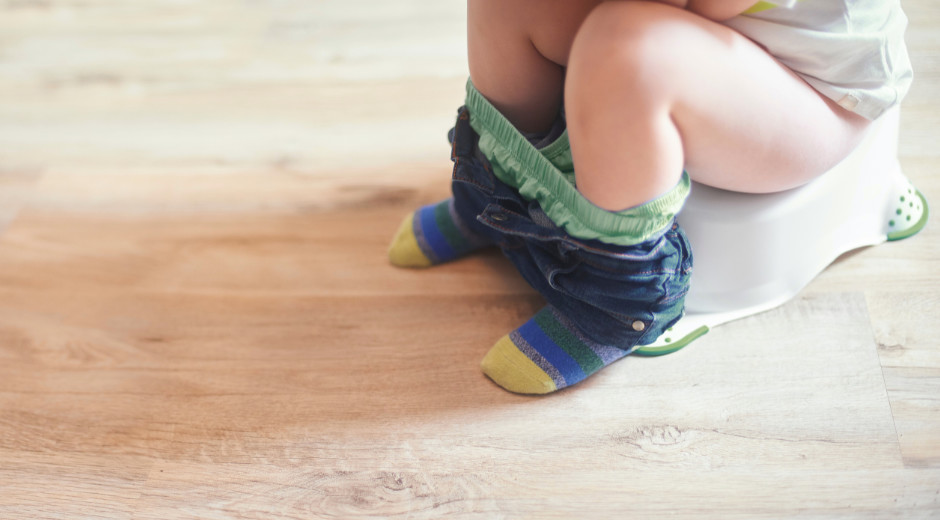
No matter where it's happening, going to the bathroom should be comfortable and strain-free. It should feel safe and not scary.
Think about a time when you've been at a restaurant and are seated at a bar-height table. Perhaps the stool you're sitting on doesn't have a back, and the footrest is way too low (or doesn't exist), so your legs are just dangling. What are your arms doing? Probably leaning against the table. If you moved your arms away, you wouldn't be super comfortable. But wait - now imagine that instead of a regular seat, you have to straddle between two separated stools so that you're hanging in the balance between them, still unable to comfortably rest your feet. It doesn't feel safe. You'd probably opt to stand instead.
This is what it feels like for little ones on a regular-sized toilet. But now, add in the need to breathe effectively, relax the pelvic floor, and feel psychologically safe in order to go to the bathroom. Not a great combo!
So how can comfort be achieved? Let's consider body position and support.
- Footrest - Feet should be resting high enough that the child's knees are slightly higher than their hips.
- Leg position - Knees should be spread out wider than hips. Drop pants and undies all the way down to ankles (or take them off).
- Seat - Think proportionally to the child's body. They should not be able to fall in.
- Back position - Leaning forward with the back straight. Forearms resting on knees.
Tools to help get your kiddo in this position:
- Training potty - Great starting place that helps a toddler get in the right position from the get-go. Pro tip: Until toileting is mastered, consider keeping an extra training potty in the trunk of your car and line it with a trash bag for easy cleanup. This will help you avoid toilet learning setbacks!
- Foot stool or "squatty potty" - Reminder to ensure that the height allows your child's knees to be just above their hips.
- Toilet seat insert - There are both portable and installable options.
- Extra postural support - If your child is super wiggly on the toilet, they may be having difficulty with postural control. This would also be a consideration if you know that your child has low tone, limited core strength, or gravitational insecurity. A potty training seat with a back rest or arm supports could be an option.
At Grow Pelvic Health, ensuring appropriate toileting position is always one of the first steps in supporting kids to achieve comfort, continence, and confidence with toileting. It's easy to miss but also easy to fix with a little bit of problem solving. If you have more questions or want us to check-in and help out with your child's toileting set-up, schedule a complimentary Discovery Session!
Courtney Suilmann
Contact Me
